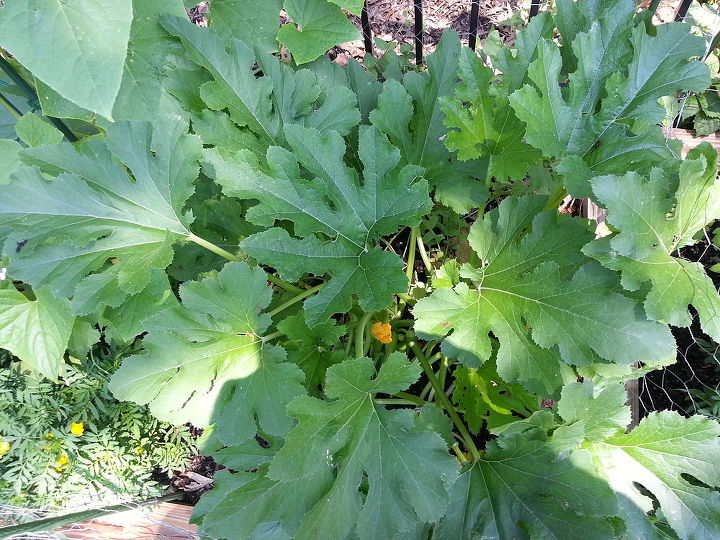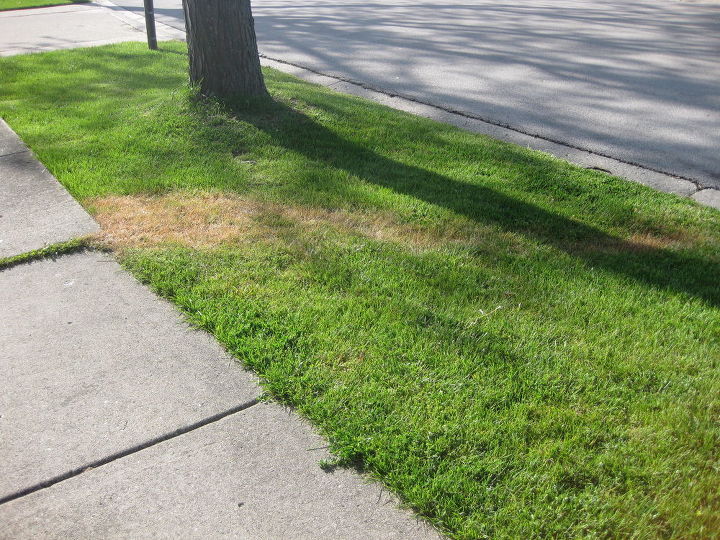Is it dropping low 40's here, should I bring coleus inside?

Related Discussions
GNATS - How to get rid of them?
Somehow my house and garden got tiny gnats that killed my fuchsia plant and fly everywhere. I have tried ALL the Web recommendations - soap and oil dishes, sand in th... See more
Marigolds growing! Should I pinch the buds?
My marigold plants are growing. I heard that pinching the buds until Autumn will allow them to grow without killing the plant. Is this true?
Growing garlic
Growing our first garlic, should we wait until the leaves are drying out before we pick it? Husband picked first one today along with our first potatoes.
How to keep mice out of your garden?
Hi everyone, I have mice in my garden destroying my vegetables and I have also noticed them in the barn and shed. Please can someone tell me how to prevent them from ... See more
What's the best flower/plant to grow in Texas?
I know that opinions vary, but what's your opinion?!I have great luck w Rosemary plants. Green all year long.
Squash Plants Large and Healthy and no Squash Growing?
2nd Season in a ROW! Squash plants growing large and healthy leaves and the stems near the roots are looking healthy and turning dark green, getting flowers that grow... See more
Trail of dead grass mystery?
Trail of dead grass appeared two weeks ago that starts in neighbor's yard and goes to the sidewalk, then continues past the sidewalk in a line into the grass into my ... See more





Yes. It is an annual so it will die once the ground freezes. But they are so easy to grow you may want to just start new ones next spring.
I found an article for you that will help with bringing in your coleus. It would be better for you to read it then me to describe it in case I leave something out in a shortened version. I tried to copy and past the address to the site, but for some reason I couldn't get it to paste. Go to gardeningknowhow.com and enter over wintering coleus into the search. When the results come up go down to the part where it shows the gardening know how results and click on the first one that says it is about over wintering your coleus. I hope this helps! They have lots of other articles on coleus, too.
Yes bring them in before they freeze and perish. Here are some links for you.
https://www.gardeningknowhow.com/ornamental/foliage/coleus/overwintering-coleus.htm
https://www.thespruce.com/grow-coleus-plants-indoors-1902746
http://www.hgtv.com/design/outdoor-design/landscaping-and-hardscaping/coleus-basics
Yes, otherwise it will die the first killing frost, which around me, in NJ is around the second week in November.
http://www.gardens.com/house-plants/3-steps-to-growing-coleus-indoors.html#sthash.heua4zJ2.dpbs
3 Steps to Growing Coleus Indoors
Coleus are distinguished by their foliage, composed of a series of colorful tear drop shaped petals available in a wide array of patterns and color combinations. There are over 60 different species of coleus, all native to Asia and Malaysia. However, virtually all of them are derived from C. Blumei, crossed with a few other species. Coleus is a popular plant for container gardening and is often used in hanging baskets both indoors and outdoors.
Coleus is officially classified as an annual plant which means that it has a 1 year life cycle from propagation to seed. However, when kept indoors the plant is more accurately described as a “tender perennial,” because it can be manipulated into surviving for several seasons (although it will die in the presence of even the slightest frost). Coleus can only be manipulated into staying in the perennial state if it is kept as an indoor plant and its flower spikes are removed each year as they develop.
TIP: Our expert gardening advisor, Rachel Klein adds, "With good care, you can grow a coleus outdoors during the summer, move it inside for the winter, and back outside again for the summer."
Step 1 - Purchase the Correct Container and Prepare the Soil
Purchase a container that has a carrying capacity of at least 1 gallon and is equipped with drainage holes on the bottom. Coleus grows the best in soil that is loose, extremely nutrient rich, and very well drained. Choose an organic potting soil equipped with a time release fertilizer and at least a 20 percent pearlite content. Pearlite retains moisture and aids in soil drainage, which is important for the health of your indoor coleus.
Fill the bottom inch of the container with gravel to ensure proper drainage. If you plan on growing from seed or cuttings, fill the remainder of the container with the potting soil. However, if you wish to purchase your Coleus from a nursery as a young plant, leave about an inch or 2 at the top of the pot free of soil so planting the seedling is tidier and easier.
Step 2 - Sow Coleus Seeds, Root a Cutting or Plant Healthy Seedlings
If you’re growing your Coleus from seeds, spread them thinly on the surface of the soil before covering them with a thin layer of soil and lightly watering with warm water. The seeds will germinate within the next 2 or 3 days if the soil temperature is 70 degrees or warmer. Sow 3 or 4 seeds in each seed pot, do not overlap the seeds. They should be spaced evenly. Place the pots in a sunny window. Use a spray bottle the moisten the soil throughout the germination process.
TIP: Rachel recommends, "If you are growing your indoor coleus from seed, it is a good idea to check the seedlings a week after germination begins. This is when your coleus will start to show their colors. Weed out any of the seedlings that are pure green in color, because they will not have the vibrant colors or patterns typically coveted by coleus growers. Also, if you have more seedlings than you want plants, weed out the weakest looking ones, leaving only the strongest and most beautiful."
To grow from a cutting, water your main plant thoroughly, choose a healthy 2 inch long stem, and cut it off with sharp scissors. Simply place the rooting end of the cutting into your moist potting soil. Keep the soil moist by misting it with a spray bottle and place a glass jar or piece of plastic over the cuttings to increase humidity and aid in rooting.
TIP: Rachel suggests, "If you need to transplant your cutting, check the soil after one week. Cuttings can be transplanted when their roots reach 2 to 3 inches long."
Seedlings purchased from a nursery only need to be repotted by gently massaging on the nursery container while simultaneously pulling on the plant’s main stem. Once it is free from the nursery container, gently break apart its root ball and plant it in your new container.
Step 3 - Maintain Your Plants
Coleus loves bright sunlight, but avoid direct afternoon sun. Indirect afternoon lighting or direct morning sun would be ideal. If the coleus is getting too much sunlight, its leaves will look scorched. Too little and leaves will appear dull and drop off. Moderate to high humidity is preferred. Place the pot on a saucer of wet pebbles to simulate humidity indoors. Keep at temperatures above 60 degrees during the summer, and above 50 degrees during the winter.
Do not allow soil to dry out between watering; about twice a week. Reduce watering in the winter. Supplement with liquid fertilizer diluted by half once every week or two during watering.
Remove all flower spikes at their first appearance to prevent the plant from going to seed and dying.
TIP: Rachel adds, "If your coleus is growing too leggy, pinch off new top growth to promote bushiness."
A coleus kept as an indoor perennial will reach 2 to 3 feet in height. When the plant gets too large for its container, either transplant to a bigger pot or trim the coleus back in the winter.